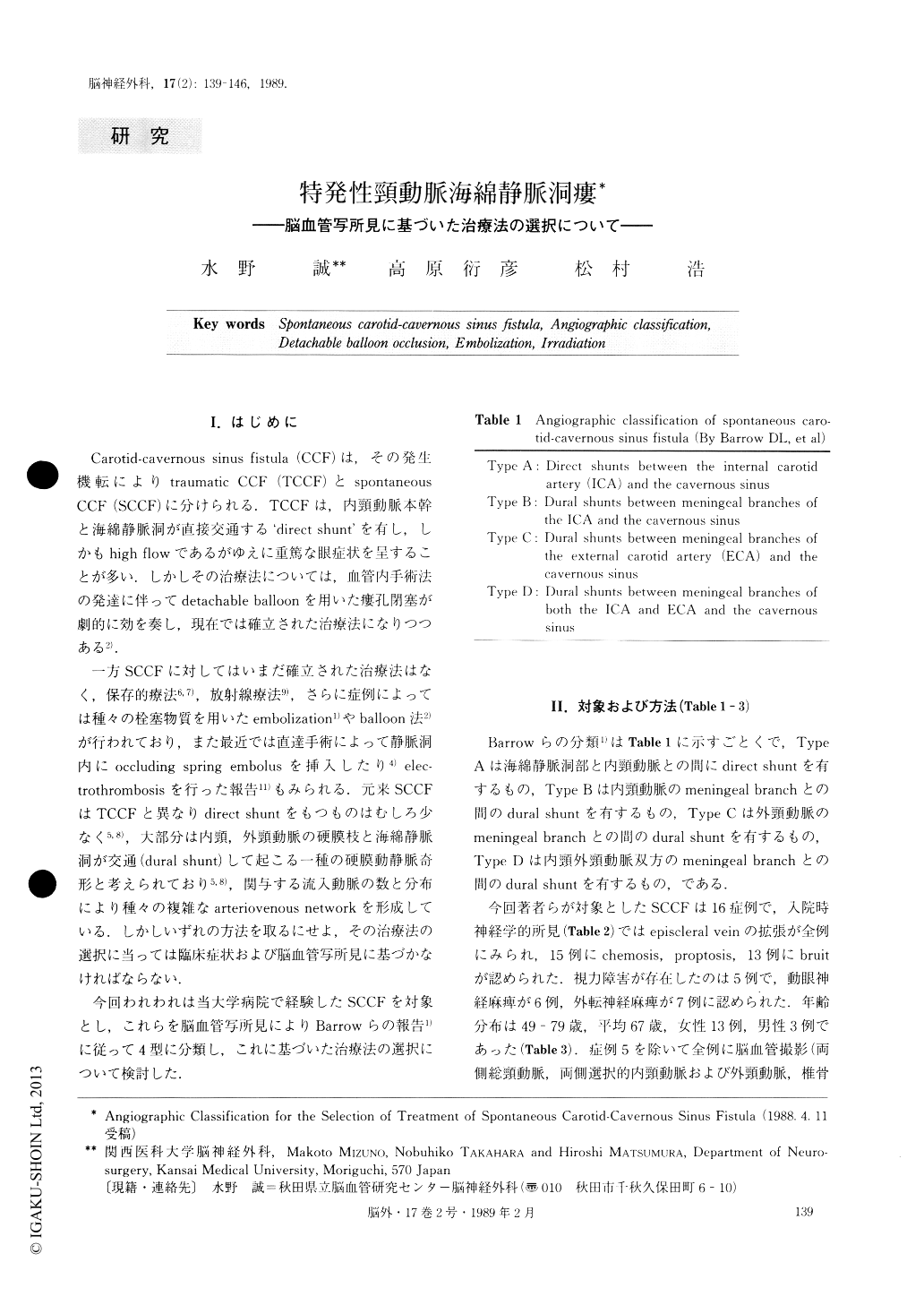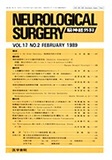Japanese
English
- 有料閲覧
- Abstract 文献概要
- 1ページ目 Look Inside
I.はじめに
Carotid-cavernous sinus fistula(CCF)は,その発生機転によりtraumatic CCF(TCCF)とspontaneous CCF(SCCF)に分けられる.TCCFは,内頸動脈本幹と海綿静脈洞が直接交通する‘direct shun’を有し,しかもhigh flowであるがゆえに重篤な眼症状を呈することが多い.しかしその治療法については,血管内手術法の発達に伴ってdetachable balloonを用いた瘻孔閉塞が劇的に効を奏し,現在では確立された治療法になりつつある2).
一方SCCFに対してはいまだ確立された治療法はなく,保存的療法6,7),放射線療法9),さらに症例によっては種々の栓塞物質を用いたembolization1)やballoon法2)が行われており,また最近では直達手術によって静脈洞内にoccluding spring embolusを挿入したり4)elec—trothrombosisを行った報告11)もみられる.元来SCCFはTCCFと異なりdirect shuntをもつものはむしろ少なく5,8),大部分は内頸,外頸動脈の硬膜枝と海綿静脈洞が交通(dural shunt)して起こる一種の硬膜動静脈奇形と考えられており5,8),関与する流入動脈の数と分布により種々の複雑なarteriovenous networkを形成している.
Sixteen cases of spontaneous carotid-cavernous sinus fistula treated in our clinic were angiographically classi-fied into four types, based on the report by Barrow et al ; Type A : direct shunts between the internal carotid artery (ICA) and the cavernous sinus (CS) , Type B : dural shunts between meningeal branches of the ICA and the CS, Type C : dural shunts between meningeal branches of the external carotid artery (ECA) and the CS, type D : dural shunts between meningeal branches of both the ICA and ECA and the CS.

Copyright © 1989, Igaku-Shoin Ltd. All rights reserved.


